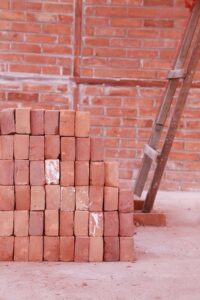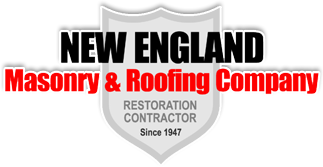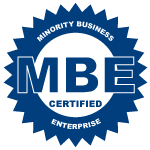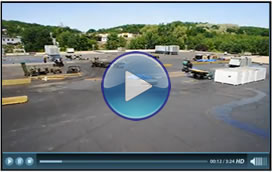Category: Masonry Services
Talking About the Materials Needed for Masonry Restoration

In the world of masonry restoration, the materials used play a significant role in achieving desired results. While labor is a major factor, adhesive and repair materials provide a critical role as well. Selecting the right materials can maximize your investment, protect against future damage and help preserve the integrity of your masonry’s existing architecture and design.
Adhering to quality standards
The trick to selecting the appropriate materials lies in selecting ones of superior quality. It is best to use masonry restoration products that are designed to adhere to strict standards. This will ensure that your restoration supplies will perform reliably.
Bonding and mortar materials
Bonding and mortar materials used during the masonry restoration process will need to match the original brick, block, stone, or other material used during the original construction process. This is necessary to ensure excellence in the aesthetics of the job and to protect against potential future damage.
Ensuring the “weatherability” of masonry restoration
In selecting masonry materials, it is important to make sure they are resistant to external elements. The best materials are built to withstand ultraviolet degradation, air pollution and other environmental factors. They should also not be easily damaged by extreme weather conditions.
Fully equipped for the job
Overall, masonry restoration is a complex process that requires the right supplies for the job. Seeking help from a qualified masonry restoration Connecticut professional or contractor is the surest way of making sure the project will be done properly and in accordance with the highest quality standards. The right materials that can withstand the test of time will make sure that your investment is worthwhile.
Connecticut Masonry Services – Discussing Masonry Restoration with Local Experts

Discussing with New England Masonry and Restoration experts in Connecticut can be of valuable help. First of all, you should ask about their background, how long they have been in the field, and if they specialize in any particular type of restoration work.
Another excellent idea is to ask them for examples of their previous restoration projects. This will give you an idea of their workmanship and the quality of their results. It can be particularly helpful if they have worked on similar structures or materials to what you need restored.
Another important topic to discuss with your specialists is that of the various masonry materials used in your structure, such as brick, stone, or concrete. You should ask them about the techniques and approaches they use for restoration projects.
It is important to find experts who prioritize preservation and use techniques that will maintain the historical and aesthetic integrity of the structure. They should be knowledgeable about appropriate cleaning methods, mortar matching, and other restoration processes.
You should also make sure that the masonry restoration company or individual holds the necessary licenses and insurance coverage for their work. This will protect you from any liabilities that may arise during the restoration process.
How to Use Masonry Restoration Services for Historic Buildings in Connecticut

Masonry restoration services are crucial for preserving and maintaining the integrity of historic buildings. These services involve repairing, cleaning, and restoring the masonry elements such as bricks, stones, and mortar to their original condition.
The first thing that has to be done is to assess the building’s masonry. Thus, you should identify areas that require attention, such as cracks, crumbling mortar, damaged bricks, or discoloration. You should take note of the extent of the damage and prioritize areas that need immediate attention.
At any rate, you should always make sure you hire experienced masonry restoration professionals who specialize in working with historic buildings. Thus, the best thing you should do is look for contractors or firms with a proven track record of restoring masonry in similar structures. They should have a deep understanding of traditional building techniques, materials, and historical preservation guidelines.
It may be a good idea to get familiar with local and national historic preservation guidelines and regulations, because they can provide valuable insights into the proper techniques, materials, and methods to use during restoration. Compliance with these regulations is crucial to ensure the historical authenticity and general appeal of the building. And together with the masonry restoration Connecticut professionals, you can develop a comprehensive restoration plan.
Is Masonry Restoration Easier Than Concrete Restoration in Connecticut?

Both concrete and masonry have been used for a very long time. And they can often be seen in brick buildings that have concrete foundations. Nevertheless, some buildings work better with concrete than with masonry. And the question may arise whether masonry restoration is more accessible than concrete restoration in Connecticut.
In some cases, masonry is more straightforward to repair than concrete, primarily because masonry tends to use a mixture of distinct, individual units. Damage can be present only in some small areas, and individual units must be prioritized.
Compared to masonry, concrete can be poured into several shapes, including sharp corners and curves. Concrete can be less expensive than masonry, too. Factors such as the size of the structure, the extent of damage or deterioration, and the presence of historical or architectural details can affect the complexity of the restoration work.
Specific masonry structures, such as historical buildings with intricate detailing, may require specialized skills and techniques, making the restoration more challenging. Similarly, complex concrete structures with unique shapes or reinforcement requirements may present their own set of challenges.
The expertise and experience of the Connecticut masonry restoration contractor play a significant role in the ease of the project. Ultimately, the ease of masonry restoration versus concrete restoration in Connecticut will depend on the specific project requirements, the condition of the existing materials, and the expertise of the restoration team.
What Are the Best Luxury Options for Upgrading to a New Driveway?

Connecticut masonry experts can help you choose the best options for upgrading to a new driveway. For your first option, select gravel installation. The initial costs for gravel installation tend to be low, even though some costs for ongoing maintenance can be a bit higher.
Concrete driveways can be another perfect option for your house. This type of driveway tends to be versatile, easy to maintain, and exceptionally durable. Moreover, it can be pretty affordable. It can have a simple yet modern design or can be made to look more traditional. You may also choose something more elaborate, such as decorative flourishes with beautiful colors and textures.
Paver driveways can boost your home’s curb appeal. There is a vast variety of options available. It can be more expensive to install than other types of material, but it is relatively effortless to maintain.
Another charming solution is that of crushed shell, which can be found in several variants, such as oyster, clam, and scallop. This can be eco-friendly, provided the shells are sourced responsibly.
Grass-jointed pavers can be another excellent example of new driveways your home will undoubtedly benefit from. A drive-through garden may be another perfect option to add to your new driveway. Companies like New England Masonry at https://www.nemasonry.com offer great options.

















